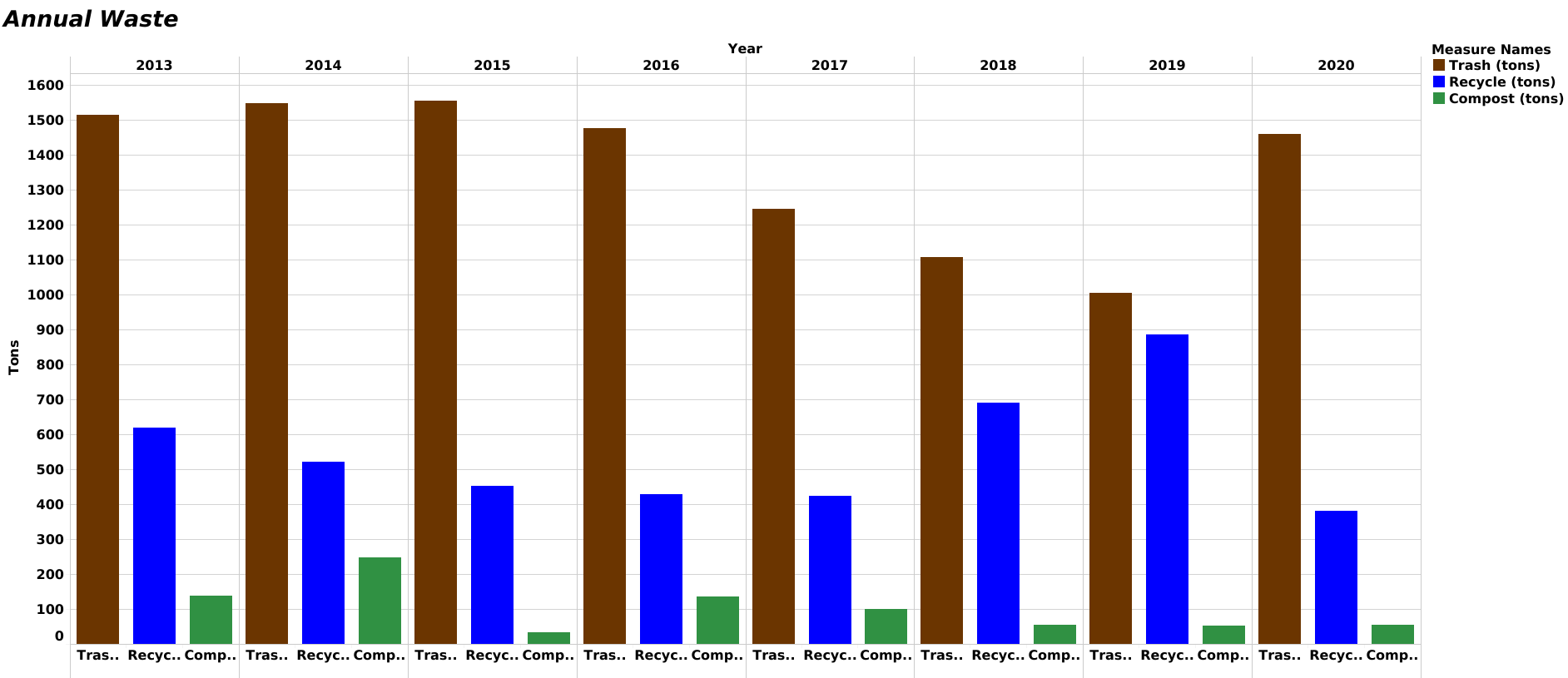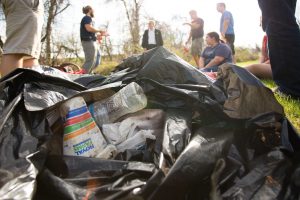UMBC has encouraged and promoted recycling on campus since the 1970’s when the campus served as a recycling collection for the county. Since 2007, UMBC has steadily decreased the amount of waste sent to the landfill. Carbon emissions associated with waste have averaged approximately 553 MTeCO2 per year, which is approximately 0.65% of the UMBC’s total carbon footprint.
Progress
UMBC has focused its attention on the reduction of solid waste sent to the landfill. Over the last decade, the university has implemented the following initiatives to reduce GHG emissions associated with solid waste:
- Participation in the National Wildlife Federation’s Recyclemania competition (every year since 2007)
- Waste management module in the Green Office Certification Program
- Introduction of organic waste diversion (e.g., compost collection) on campus
- Ability to request composting for events
- Single stream recycling program
- Hosting campus-wide electronic recycling events
Future Steps
UMBC’s proposed strategies for the reduction of GHG emissions associated with waste management focus on the following areas: reduce solid waste generation, increase waste diversion rate from the landfill, and increase total organic waste diversion.
Solid Waste Generation Reduction
Objective
Reduce the amount of solid waste generated.
Implementation Plan
- Work with procurement to identify purchasing and contractual mechanisms to reduce the amount of packing materials associated with the freight of goods
- Collaborate with work control to increase the number of institutional items salvaged for reuse or destined for surplus
Reduction Opportunity
1 MTeCO2 reduction per 7 tons of waste reduced
Required Resources
Work with procurement to identify contracting opportunities to specify reduction of bulk paging
Suggested Timeline
2025: reduce solid waste generation by 10 tons
2035: reduce solid waste generation by an additional 10 tons
Increase Waste Diversion Rate
Objective
Increase the amount of materials entering the recycling stream.
Implementation Plan
- Improve recycling rate through engagement/education
- Increase recycling through the identification of unique recyclable materials and programs
- Continue and expand Trex University challenge to recycle single-use plastic bags
Reduction Opportunity
Every 1 ton of material diverted from the landfill is an avoidance of 0.1467 MTeCO2
Required Resources
Time and materials devoted to recycling education and engagement of the campus population
Suggested Timeline
2025: Increase diversion rate to 45 percent
2035: Increase diversion rate to 55 percent
Organic Waste Diversion
Objective
Increase the amount of pre and post-consumer organic waste (i.e., compost) diverted from campus.
Implementation Plan
- Increase the amount of organic waste diverted from campus dining establishments
- Identify areas on campus to feasibly expand the collection of organic waste collection
Reduction Opportunity
For every ton of organic waste diverted and composted -0.05 MTeCO2 is “offset” to UMBC’s carbon emissions. The negative emissions factor is an estimate for the CO2 sink from increased humus formation and soil carbon restoration associated with composting.
Required resources
- $ per year for increasing composting efforts at campus dining establishments
- $ per year for expanding compost collection on campus
Timeline
2020: Pilot organic compost collection point(s) on the residential side of campus
2025: Increase organic waste diversion at campus dining establishments by 20% from 2019’s metrics
2030: Offer organic waste diversion throughout the entire campus
2040: Attain net-zero carbon emissions from the disposal of solid waste

